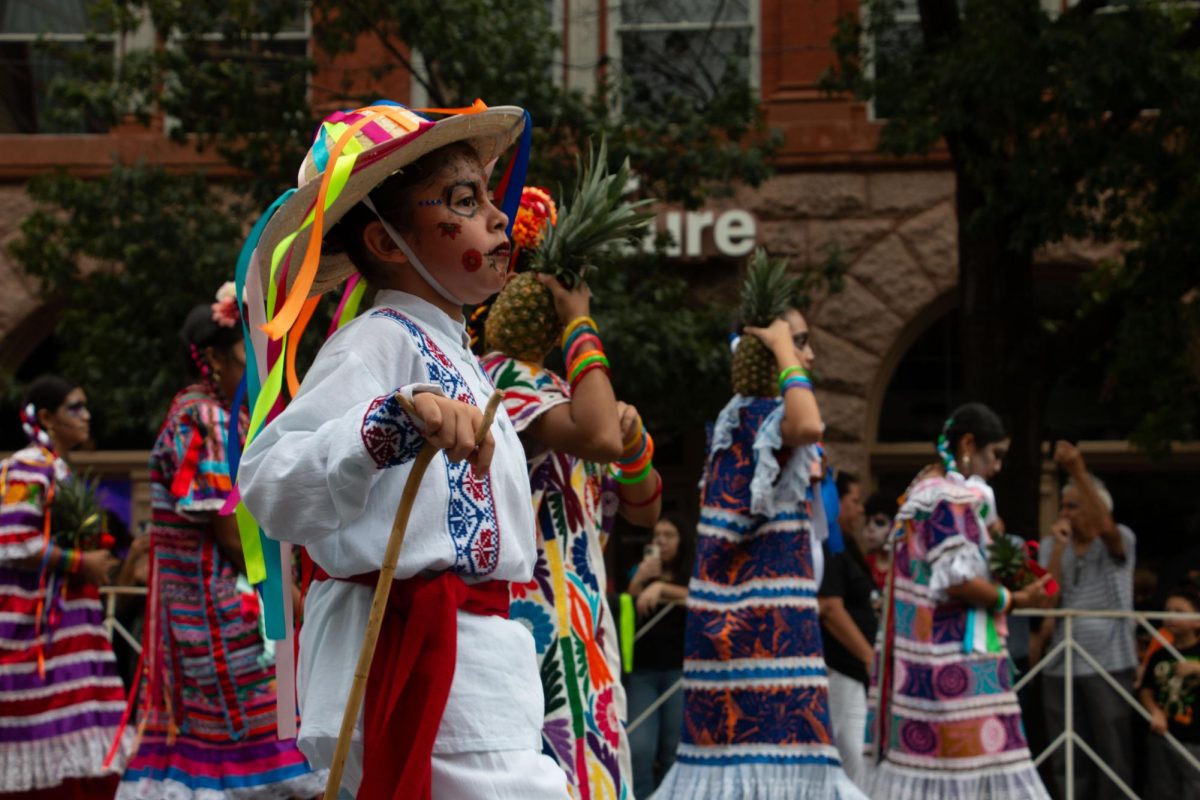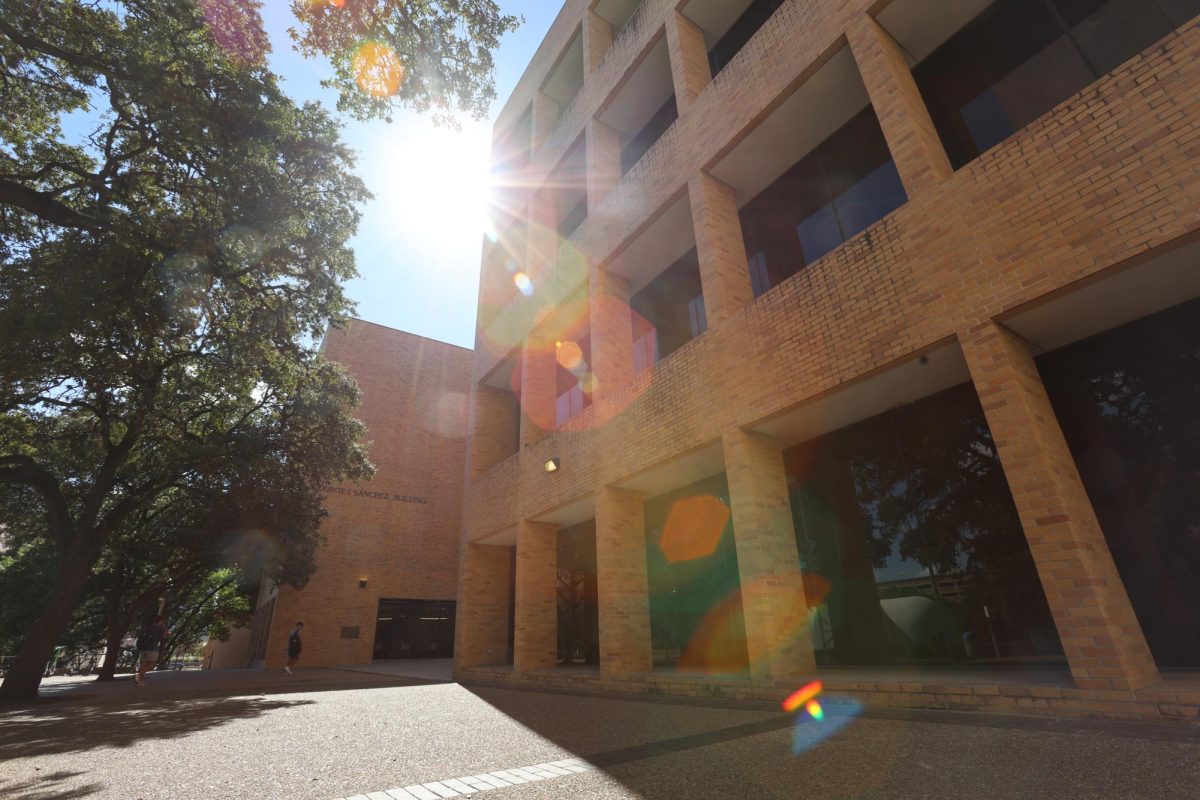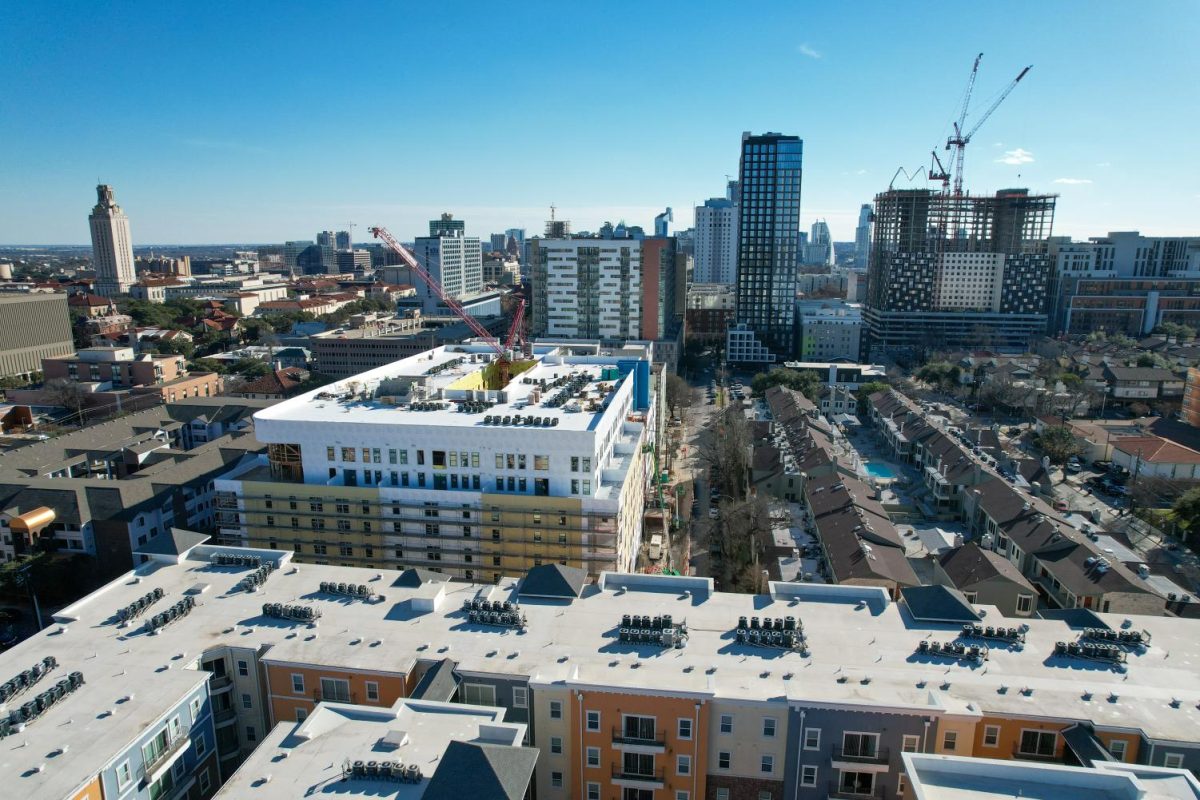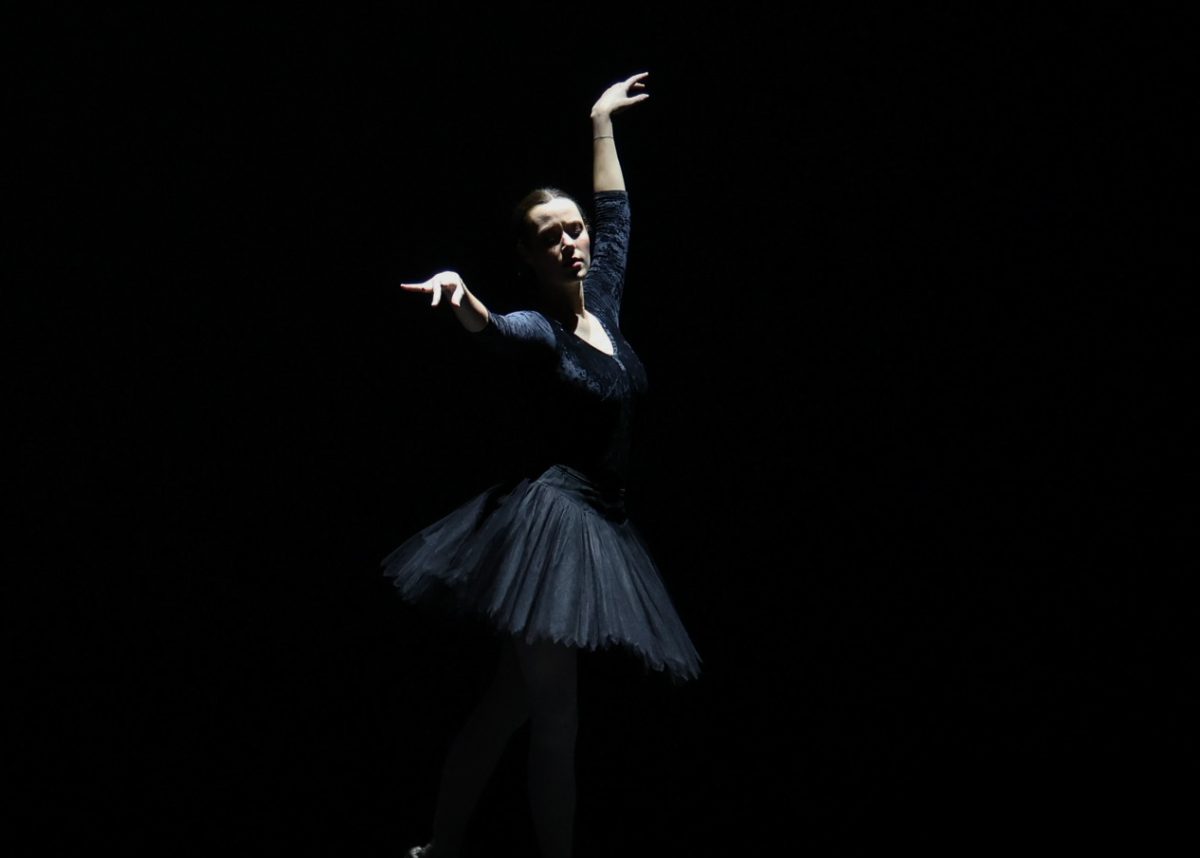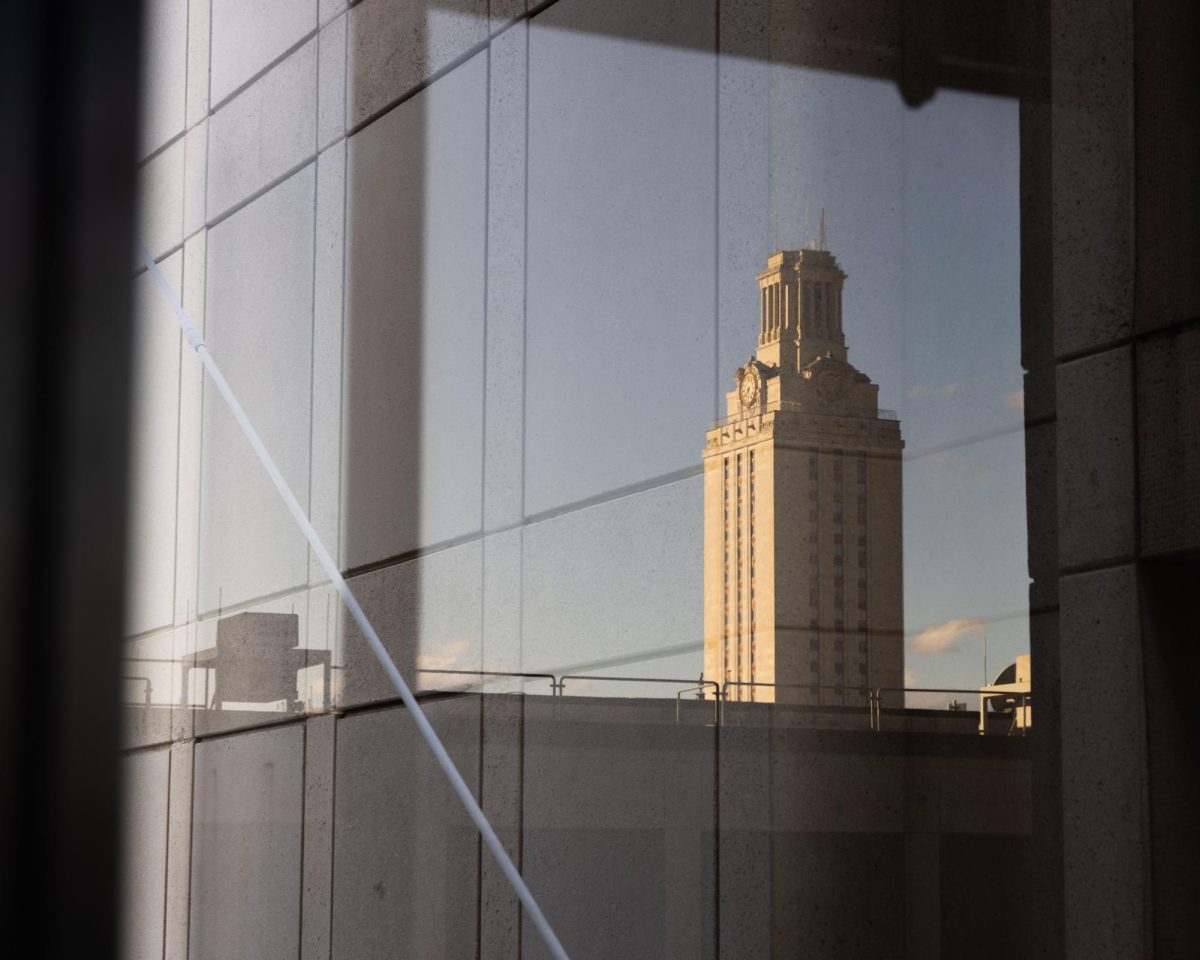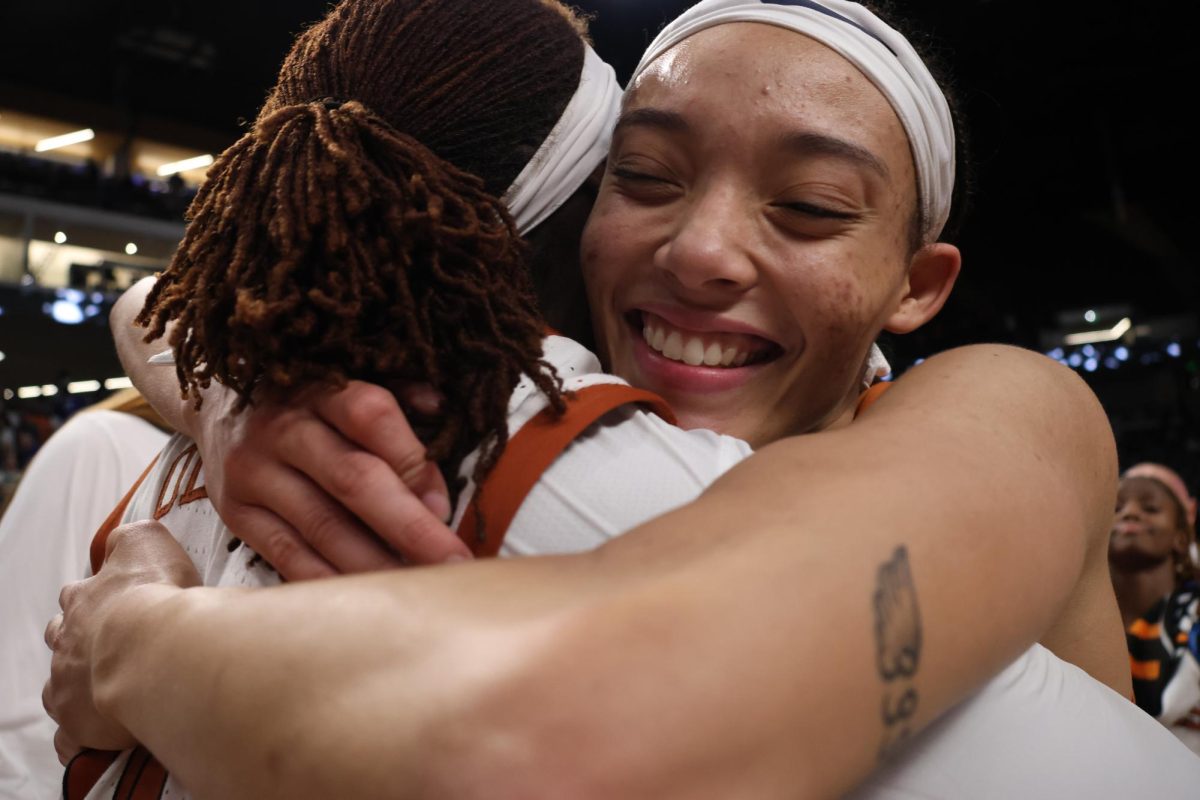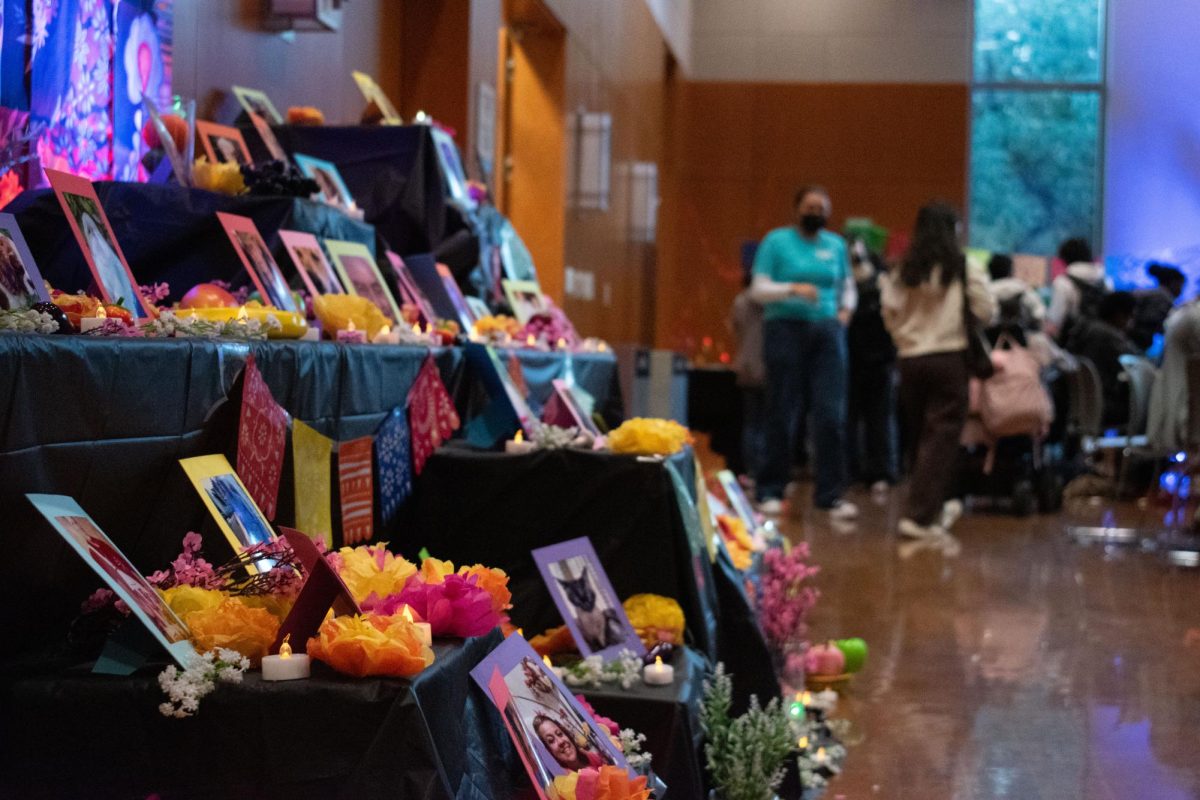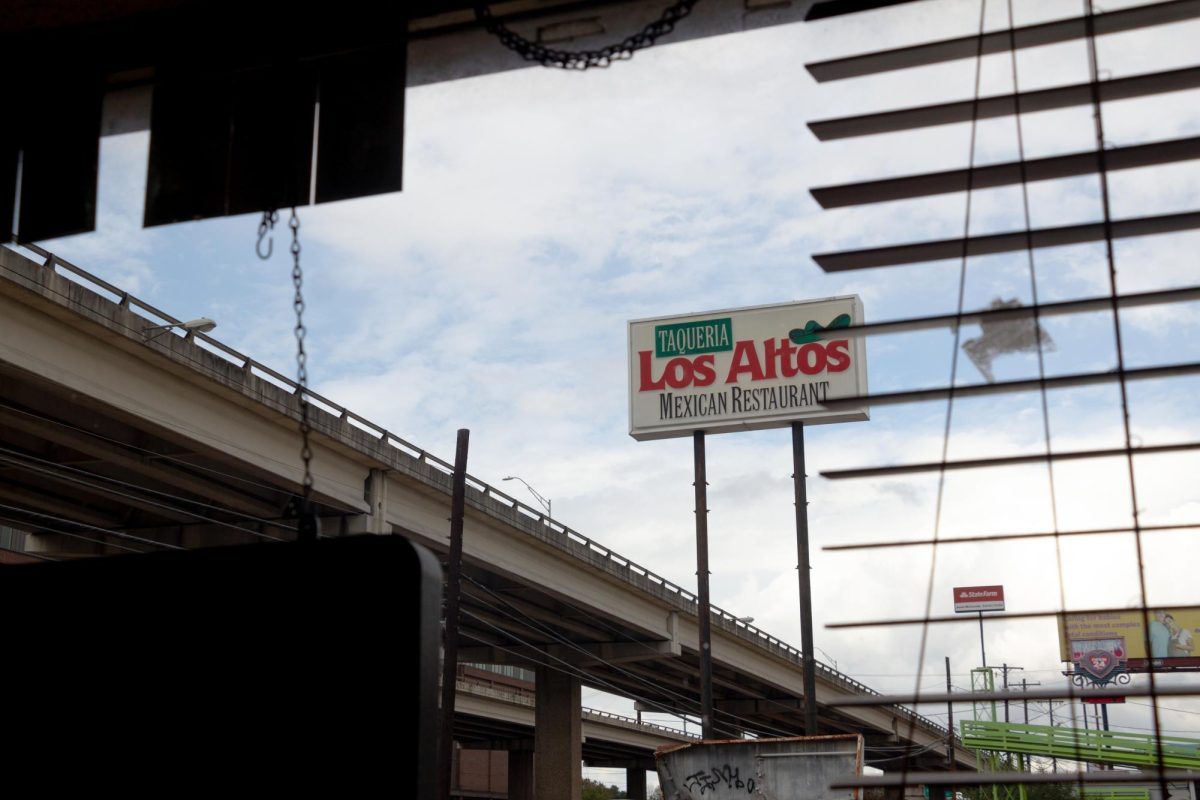Austin’s annual “Viva la Vida” Day of the Dead parade marched down historic 6th Street Saturday afternoon. Attendees waved colorful papel picado, showcased various forms of Latinx art and culture and pushed a big faux cake in celebration of their 40th anniversary. There, on that hot and humid October day, members of UT’s very own Phi Lambda Chi Latina Sorority carried floats along the parade’s half-mile route.
“It was really big, I wasn’t expecting that many people to be honest,” said Jazlynn Moya, a neuroscience junior and president of Phi Lambda Chi. “There were so many different types of people. They were just so excited to be there.”
Pi Lambda Chi requires 10 volunteer hours from each of their members. Four members signed up to volunteer at this years’ parade, including Moya, who said that she was unaware of the large celebration of Latinx culture that takes place in the heart of the city before volunteering this year.
“I’ve never really been to anything like (the parade),” said Moya. “So it was really cool to see everything, like all the different things they had, especially for the kids.”
Austin’s Mexic-Arte museum has organized the festival and parade celebrating the holiday since 1984, with this year’s special theme being La Catrina, a widely-known Mexican symbol honored during the festivities. Pre-Columbian, Mexico Lindo y Las Américas, Chicanx and Austin Weird made up the rest of the categories for the parade. Each section included a spotlight on the many different expressions of culture found within the city.
Dance groups like Guerreros de Xochipilli and Danza Azteca, local elementary schools playing instruments or dancing folklorico, and even Austin mariachi’s took part in the procession. Moya and Marilia Silva, another member of the same sorority, helped carry large paper mache icons of Latinx culture, including figures like Frida Kahlo and Pancho Villa.
“It was really cool because I feel like I’ve never really gotten to be involved in Latino culture and doing stuff for that,” said Moya. “It was just really nice to finally be part of something like that.”
The hour-long parade concluded with the annual festival, showcasing more indigenous dances and musical groups. Local artisans set up booths selling colorful figures of animals from Mexican folklore, known as alebrijes, as well as shirts and other memorabilia celebrating Latinx culture.
“It was nice to see a bunch of different aspects of Mexican culture, because I’m not Mexican,” said Silva, who is an international student from Brazil. “It was nice to learn about more aspects (of the holiday), to listen to the music and just see the community.”

